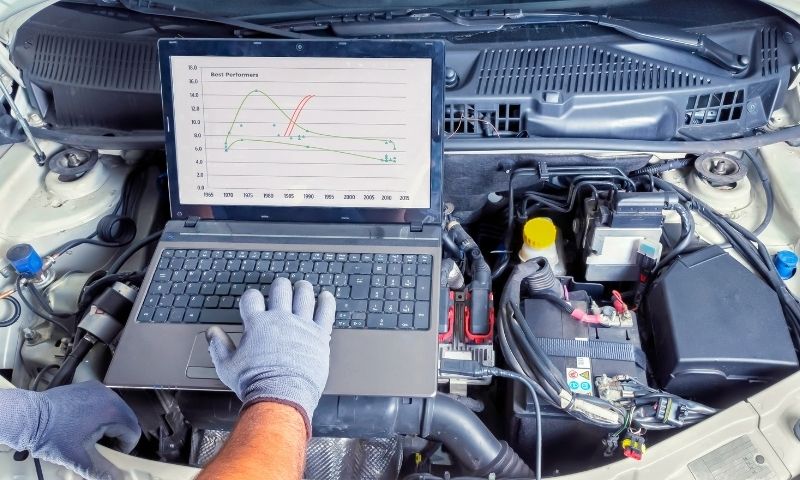A Leading Resource Built By Automotive Lovers, For Automotive Lovers.
We’ve helped consumers around the world make their purchasing decisions.
Latest Articles
The Power Conversion System (PCS) is essential in Battery Energy Storage Systems (BESS). It transforms direct current (DC) from the batteries into alternating current (AC) for the power grid. This… A Pro-Rata Warranty for a battery provides partial coverage after the initial warranty period ends. The replacement cost is based on the remaining warranty time and a portion of the… The rated capacity of a battery shows the maximum energy it can provide when fully charged and under set conditions. It is expressed in milliamp hours (mAh). This value helps… Battery optimization helps conserve power on devices. It manages battery life by learning user patterns. In Android 9.x and higher, it uses Adaptive Battery settings. iOS 13 offers Optimized Battery… Open circuit voltage (OCV) is the voltage of a battery when it is not connected to any load. It shows the potential difference between the battery’s positive and negative electrodes…. Optimized Battery Charging is a feature on iPhones. It helps maintain battery health by delaying charging past 80% in certain situations. This feature analyzes your usage patterns to find the… A normal iPhone battery keeps up to 80% of its original capacity after 500 charge cycles. For iPhone 15 models, this threshold extends to 1000 cycles. Apple considers batteries above… The nominal voltage of a LiFePO4 battery is 3.2 volts. This stable voltage enhances safety and provides a long cycle life. When fully charged, the voltage reaches around 3.65 volts,… The nominal capacity of a battery indicates the amount of energy it can store and provide under normal conditions. This capacity is measured in milliamp hours (mAh). Battery manufacturers include… Nominal battery voltage is the standard average voltage a battery delivers when fully charged. It acts as a reference during operation. Actual voltage can fluctuate; it is higher when the… A nickel-metal hydride (NiMH) battery pack is a set of rechargeable cells that provide higher voltage. They use a chemical reaction to absorb hydrogen for energy. NiMH batteries are cost-effective… NMC (Nickel Manganese Cobalt) battery chemistry uses nickel, manganese, and cobalt in its cathode composition. This type of lithium-ion battery provides a good balance of energy density and thermal stability…. A dual battery system requires a dual battery tray, a deep-cycle battery, a battery isolator, a battery charger, and suitable wiring and fuses. Ensure the auxiliary battery matches the primary… New battery technology focuses on efficiency and safety. Innovations include graphene batteries for fast charging and solid-state batteries with solid electrolytes. Notable examples are NanoBolt lithium tungsten and zinc-manganese oxide… Milwaukee’s M18 High Output batteries offer 50% more power and run 50% cooler than earlier REDLITHIUM options. The XC6.0 and HD12.0 packs work well in extreme cold. They provide fade-free… NCM battery chemistry is a type of lithium-ion battery made from nickel (N), cobalt (C), and manganese (M). This combination offers high energy density and efficiency. NCM batteries generally perform… The maximum discharge current of a battery is the highest current it can safely provide. It is often shown as a “C” rate. For example, a 100Ah battery rated at… Battery capacity measures the total amount of electricity a battery can store. It is expressed in milliamp-hours (mAh) or ampere-hours (Ah). A higher capacity allows devices to run longer. Capacity… A low voltage battery in a Tesla powers important vehicle functions like locks and lights. Tesla’s newer models, like the Model 3 and Model Y, use lithium-ion batteries, which last… A lithium-ion (Li-ion) battery is a rechargeable battery that stores and delivers electrical energy. It operates by moving lithium ions (Li+) between an anode and a cathode through an electrolyte… The iPhone XS Max has a battery capacity of 3174 mAh. It delivers reliable performance with the A12 Bionic chipset. The device supports up to 25 hours of talk time,… An LFP battery, or lithium iron phosphate battery, is a type of lithium-ion battery that uses lithium iron phosphate (LiFePO4) as its cathode material. LFP batteries have high energy density,… The iPhone XR’s battery capacity is 2942 mAh. It offers up to 25 hours of talk time and 15 hours of internet use. The device supports fast charging, reaching 50%… Optimized Battery Charging enhances an iPhone’s battery lifespan by limiting charging time at 100%. It delays charging past 80%, reducing heat and wear. This feature is available on recent iPhone… The iPhone 14 has a battery capacity of 3,279 mAh. It offers up to 20 hours of video playback, 16 hours of streaming video, and 80 hours of audio playback…. The iPhone 6s has a battery capacity of 1715 mAh. In contrast, the iPhone 6s Plus has a larger battery capacity of 2750 mAh. Users can enjoy up to 14… The iPhone 13 Pro has a battery capacity of 3095 mAh. It uses a rechargeable lithium-ion battery. Fast charging allows the battery to reach 50% in just 30 minutes. Users… The iPhone 12 Pro Max has a battery capacity of 3687 mAh. It allows up to 20 hours of video playback, 12 hours of streamed video, and 80 hours of… The iPhone 12 Pro has a battery capacity of 10.78 Wh (2,815 mAh). It provides up to 17 hours of video playback and 65 hours of audio playback. This rechargeable… The iPhone 11 Pro has a battery capacity of 3,046 mAh, a 14.5% increase from the iPhone XS. It allows for up to 18 hours of video playback and 65…What is PCS in Battery Storage? A Guide to Power Conversion Systems Explained
Pro Rata Warranty in Battery: Meaning, Benefits, and Calculator Explained
Rated Capacity of a Battery: Overview of Battery Ratings and Their Impact
Optimizing Battery: Understanding Settings and Techniques for Maximum Performance
Open Circuit Voltage in Battery: Definition, Measurement, and Understanding Explained
Optimized Battery: What It Is, Benefits for Battery Lifespan, and Charging Guide
Normal iPhone Battery Capacity: Average Health, Performance, and Lifespan Explained
LiFePO4 Batteries: What is Nominal Voltage? A Comprehensive Guide to Levels and Charging
Nominal Capacity of a Battery: Understanding Its Impact on Performance and C-Rate
Nominal Battery Voltage: Meaning, Importance, and Applications Explained
NiMH Battery Pack: Key Facts, Charging Basics, and Comparison with Lithium Batteries
NMC Battery Chemistry: Benefits, Applications, and Comparison with LFP Batteries
Dual Battery System: What You Need, Essential Components, and Setup Guide
New Battery Technology: Innovations and Trends in Energy Storage Solutions
Milwaukee High Output Battery: Features, Benefits, and Uses of 18-Volt REDLITHIUM Packs
NCM Battery Chemistry: Understanding Its Impact on Electric Vehicle Technology
Maximum Discharge Current of Battery: C-Rate, Specifications, and Calculations
Battery Capacity: What It Means, Its Importance, and How to Measure It
Low Voltage Battery in Tesla: Role, Replacement Needs, and Warning Signs
Lithium-Ion Battery: What It Is, How It Works, and Key Fundamentals Explained
iPhone XS Max Battery Capacity: Specs, Performance Insights, and Comparison
LFP Battery Chemistry: Characteristics, Benefits, and Applications Explained
iPhone XR Battery Capacity: Specifications, Performance, and Key Insights
iPhone Battery Optimization: Maximize Performance with Smart Charging Techniques
iPhone 14 Battery Capacity: Performance, Longevity, and Usage Over Time Explained
iPhone 6s Battery Capacity: Specs, Health, Replacement Options, and Performance Insights
iPhone 13 Pro Battery Capacity: Specs, Performance Insights, and Efficiency Review
iPhone 12 Pro Max Battery Capacity: Specs, Performance Insights, and Comparisons
iPhone 12 Pro Battery Capacity: Specs, Performance Insights, and Battery Life Explained
iPhone 11 Pro Battery Capacity: Specs, Performance Insights, and Life Review



